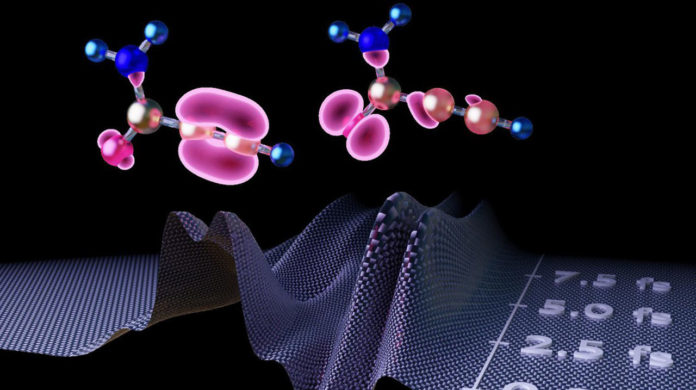Scientists at the EPFL’s Laboratory of Theoretical Physical Chemistry (LCPT), studying the dynamics of polyatomic molecules- found that electrons in these molecules move quite differently from what would be expected in isolated atoms.
It is well known that the oscillations quickly become damped in most polyatomic molecules. This process is called decoherence. Despite this fact, oscillations in some molecules last longer before decoherence sets in.
A newly developed method that captures decoherence’s physical mechanism allows scientists to identify molecules with long-lasting coherences. This method could be helpful in the development of new electron-based technology or studying quantum effects in biomolecules.
Nikolay Golubev, a post-doc at LCPT and the study’s lead author, said, “Electron movement takes place extremely rapidly – on an attosecond scale – so it’s challenging to observe. Furthermore, electron motion is strongly coupled to other processes in a molecule. This is why the research team incorporated an additional piece of information into their study: the slower dynamics of the atomic nuclei and its influence on electrons. It was found that in most molecular structures, the slow nuclear rearrangement damps the initially coherent oscillations of electrons and makes them disappear in a few femtoseconds.”
Scientists first needed to ensure whether the decoherence takes place. Thus, they developed a theoretical method to efficiently and precisely determine electrons and nuclei dynamics once ultrashort laser pulses ionize the molecules. For this, they used a semiclassical approach in that it combines quantum features, like the simultaneous existence of several states, and classical features, namely classical trajectories guiding the molecular wavefunctions.
Using this method, scientists were able to detect the decoherence process much faster. The technique also made it easier to analyze many molecules and spot ones that could potentially have long-lasting coherences.
Jiri Vanicek, head of the LCPT, said, “The semiclassical approach makes it possible to replace the untreatable quantum problem with a still difficult, but solvable, problem, and provides a simple interpretation in which the molecule can be viewed as a ball rolling on a high-dimensional landscape.”
Scientists illustrated their method by applying it to two compounds: propiolic acid, whose molecules present long-lasting coherence, and propiolamide (a propiolic acid derivative), in which the decoherence is fast.
Because it evaluates the fly’s electronic structure, the semiclassical technique avoids the “curse of dimensionality” and should be useful for preselecting molecules for experimental studies.
This discovery is a significant step toward a deeper understanding of molecular structures and dynamics and stands to be a useful tool for observing long-lived electronic coherence in molecules. With a better understanding of the decoherence process, scientists could one day observe exactly how molecules act in biological tissue, for example, or create new kinds of electronic circuits.
Journal Reference:
- Nikolay V. Golubev, Tomislav Begušić, and Jiří Vaníček. On-the-Fly Ab Initio Semiclassical Evaluation of Electronic Coherences in Polyatomic Molecules Reveals a Simple Mechanism of Decoherence. DOI: 10.1103/PhysRevLett.125.083001
